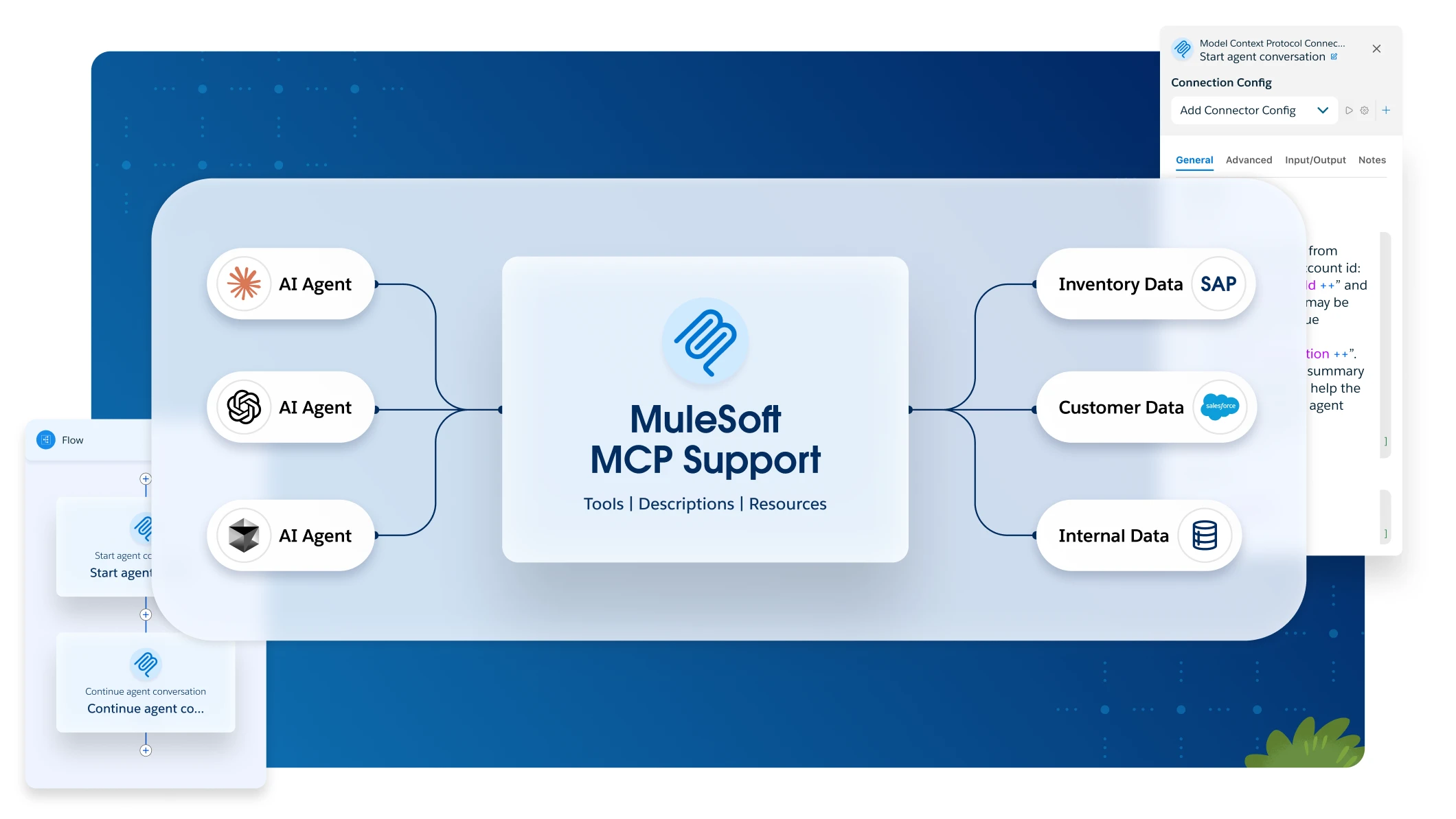kubectl -n monitoring port-forward $(kubectl -n monitoring get svc --selector='app.kubernetes.io/name=grafana' -oname | head -n 1) 3000:80Configuring Grafana Dashboards
Monitor the health of your Anypoint Platform Private Cloud Edition (Anypoint Platform PCE) installation and its running applications with Grafana dashboards. These dashboards provide a visual representation of the data collected by the monitoring tools in your Anypoint Platform PCE installation.
The Grafana application uses a Kubernetes service of type NodePort to expose the service to the external network. To access Grafana, configure the load balancer to forward traffic to port 32380.
Alternatively, use the kubectl port-forward command to access Grafana locally:
Access the Grafana Dashboard
To retrieve credentials for Grafana, use these commands:
kubectl -n monitoring get secrets grafana-creds -ojsonpath='{.data.admin-user}' | base64 --decode
kubectl -n monitoring get secrets grafana-creds -ojsonpath='{.data.admin-password}' | base64 --decodeCreate a Custom Dashboard
You can create custom dashboards in Grafana using its web interface. However, these dashboards are lost if the Grafana pod restarts. To create a custom dashboard that persists across restarts, create a ConfigMap with the label grafana_dashboard=1.
This example demonstrates how to create a ConfigMap with a custom dashboard:
-
Create a file with the dashboard configuration, for example,
example-redis.yaml:
apiVersion: v1
kind: ConfigMap
metadata:
name: my-custom-dashboard
namespace: monitoring
labels:
grafana_dashboard: "1"
data:
example-redis.json: |
{
"annotations": {
"list": [
{
"builtIn": 1,
"datasource": "-- Grafana --",
"enable": true,
"hide": true,
"iconColor": "rgba(0, 211, 255, 1)",
"name": "Annotations & Alerts",
"type": "dashboard"
}
]
},
"timezone": "browser",
"title": "My Example Redis Dashboard",
"description": "",
"editable": true,
"gnetId": null,
"graphTooltip": 0,
"id": 29,
"iteration": 1645573265624,
"links": [],
"panels": [
{
"aliasColors": {
"Max": "#890F02",
"Used": "#7EB26D",
"max": "#BF1B00"
},
"bars": false,
"dashes": false,
"datasource": null,
"editable": false,
"error": false,
"fieldConfig": {
"defaults": {},
"overrides": []
},
"fill": 1,
"fillGradient": 0,
"hiddenSeries": false,
"id": 7,
"isNew": true,
"legend": {
"avg": false,
"current": false,
"hideEmpty": false,
"hideZero": false,
"max": false,
"min": false,
"show": true,
"total": false,
"values": false
},
"gridPos": {
"x": 0,
"y": 0,
"h": 11,
"w": 24
},
"lines": true,
"linewidth": 2,
"links": [],
"nullPointMode": "null as zero",
"options": {
"alertThreshold": true
},
"percentage": false,
"pluginVersion": "7.5.10",
"pointradius": 5,
"points": false,
"renderer": "flot",
"seriesOverrides": [],
"spaceLength": 10,
"stack": false,
"steppedLine": false,
"targets": [
{
"exemplar": true,
"expr": "sum by (pod)(redis_used_memory{pod=~\"$pod\"})",
"interval": "",
"legendFormat": "{{pod}}",
"refId": "B"
}
],
"thresholds": [],
"timeFrom": null,
"timeRegions": [],
"timeShift": null,
"title": "Memory Usage",
"tooltip": {
"msResolution": false,
"shared": true,
"sort": 0,
"value_type": "cumulative"
},
"type": "graph",
"xaxis": {
"buckets": null,
"mode": "time",
"name": null,
"show": true,
"values": []
},
"yaxes": [
{
"format": "bytes",
"label": "",
"logBase": 1,
"max": null,
"min": 0,
"show": true
},
{
"format": "short",
"label": null,
"logBase": 1,
"max": null,
"min": null,
"show": false
}
],
"yaxis": {
"align": false,
"alignLevel": null
}
}
],
"refresh": false,
"schemaVersion": 27,
"style": "dark",
"tags": [],
"templating": {
"list": [
{
"allValue": null,
"current": {
"selected": false,
"text": "All",
"value": "$__all"
},
"datasource": null,
"definition": "label_values(redis_maxmemory, pod)",
"description": null,
"error": null,
"hide": 0,
"includeAll": true,
"label": "Pod",
"multi": true,
"name": "pod",
"options": [],
"query": {
"query": "label_values(redis_maxmemory, pod)",
"refId": "StandardVariableQuery"
},
"refresh": 2,
"regex": "",
"skipUrlSync": false,
"sort": 0,
"tagValuesQuery": "",
"tags": [],
"tagsQuery": "",
"type": "query",
"useTags": false
}
]
},
"time": {
"from": "now-6h",
"to": "now"
},
"timepicker": {
"refresh_intervals": [
"5s",
"10s",
"30s",
"1m",
"5m",
"15m",
"30m",
"1h",
"2h",
"1d"
],
"time_options": [
"5m",
"15m",
"1h",
"6h",
"12h",
"24h",
"2d",
"7d",
"30d"
]
}
}-
Create the ConfigMap with the following command:
kubectl apply -f example-redis.yamlTo update the dashboard, modify the ConfigMap, and the dashboard updates automatically.
Delete a Custom Dashboard
To delete a custom dashboard, delete the corresponding ConfigMap. The dashboard associated with the ConfigMap is removed automatically.
kubectl -n monitoring delete cm my-custom-dashboardList All Persistent Dashboards
To get a list of all ConfigMaps with the label grafana_dashboard=1, use this command:
kubectl get configmaps --selector='grafana_dashboard=1' -A



